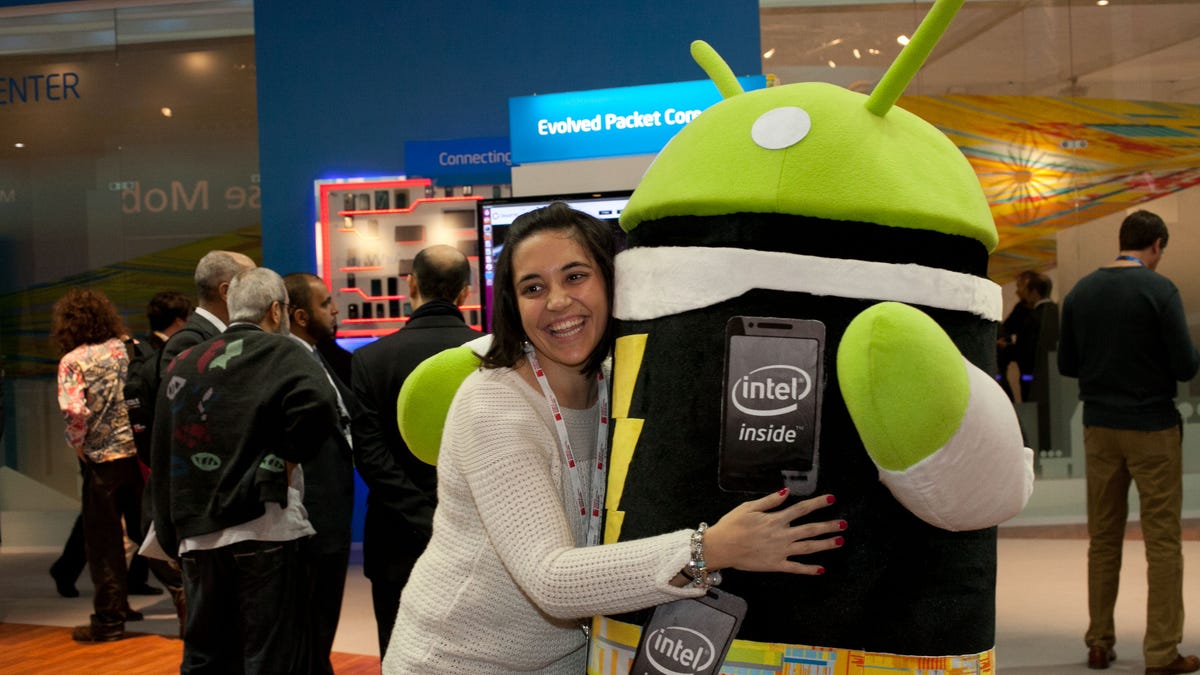Big screens and Jelly Bean mark Android trends at Mobile World Congress
The annual conference yields plenty of new Android products, but what do they have in common?

As expected, the annual Mobile World Congress has delivered an army of new Android devices. Really, though, we'd expect nothing less from the world's largest gathering of mobile-minded products and services. And with Android playing a dominant role in the smartphone landscape, it stands to reason that a majority of new phones and tablets would launch with the Google platform.
A number of standout devices made headlines this week, including the ZTE Grand Memo, Huawei Ascend P2, and the Sony Tablet Z.
LG got things started last week with the refreshed
Hedging bets
One trend I've seen emerge out of Barcelona, Spain, this year is the hedged bet, or the backup plan. A number of Android players have committed to another platform, including LG, Samsung, Sony, and Huawei. A few have pledged support for
Power up
As if we would expect anything less, today's Android phones and tablets are getting faster with each generation. This year's MWC brought a number of products employing the new Qualcomm Snapdragon 600 and 800 processors. We're a few months off before we see any Nvidia Tegra 4 smartphones; however quad-core is becoming quite the buzzword (yet, an eight-core chip is on the horizon). The new round of Android phones seem to hover around the 1.7GHz clock speed, some inching higher.
Bigger and bigger
The needle keeps moving forward with Android display sizes as nearly all of the prominent announcements featured screens at 4 inches or larger. Most now hover in the range of 4.5 inches, including midrange offerings such as the
Even not-so-familiar names such as Alcatel and Acer have hopped onboard, debuting devices with bigger screens. For those who prefer a more diminutive form factor, you'll be disappointed by the new crop of Androids.
Jelly Bean
Considering that the Android 4.1 Jelly Bean platform has been around for quite a few months, it should come as no surprise that most devices announced featured this version. Then again, we are talking about Android. It seems that nearly every large conference brings new phones with "antiquated" releases. I was pleased to see that very few models were announced with Android 4.0 Ice Cream Sandwich. Most of the phones and tablets we saw at Mobile World Congress were introduced with Android 4.1 Jelly Bean or later. Sadly, by the time these end up making their way to retail stores and carriers, we'll be talking about the next iteration of Android.
More megapixels
Most of today's top Android handsets are creeping into the 13-megapixel range, as evidenced by the LG Optimus G Pro and Huawei Ascend P2. The 3-megapixel and 5-megapixel cameras look to be relegated to the entry-level devices as 8 megapixels and above become the norm. This may all change, of course, if other companies adopt HTC's strategy for the
NFC love
NFC is fast becoming a standard Android feature as the coming year promises new services and accessories. No longer synonymous with mobile payments, the tap technology is found in plenty of speakers, headsets, signs, and more. Samsung, for its part, has doubled down on NFC and plans to integrate Visa PayView in future smartphones including the upcoming Galaxy S4.
Indeed, MWC did not bring about any particular new or emerging technology. Rather, we were given a bit more of the things we've come to expect in Android. I will be interested to see how fast some of these models make it to market and what kind of platform support each is offered. With Google I/O approaching in May we should anticipate the next release of Android. It will be at that point when consumers will wonder if or when their brand-new handset will be updated.
Did you see a particular Android phone or tablet that really caught your eye? Was there a specific manufacturer that surprised you at Mobile World Congress? I would love to hear your thoughts and opinions in the comment section.

